Fishing Roundup: Johnny Cash checks in for this week's angling report; plus, some tips
How high's the water, mama?
Two feet high and risin'
How high's the water, papa?
She said it's two feet high and risin'
John R. Cash
.
How’s that floating dock sound right about now, Cap’n?
Everywhere you look along the river banks, you see docks in ankle-deep water, sometimes deeper. A triple-whammy will do that.
Last week’s endless rains eventually shook hands with an onslaught of northeast winds, and wouldn’t you know it, one more supermoon joined the party and had us all considering swimmies as a fashion accessory.
Things will calm down, as they always do, but you’ll also notice how all that water takes longer to leave than it did to come in and stir things up. We all know the type, right?
OL' CHUM Old NSB bait shop in Bethune Beach has a new name and unlikely new owner
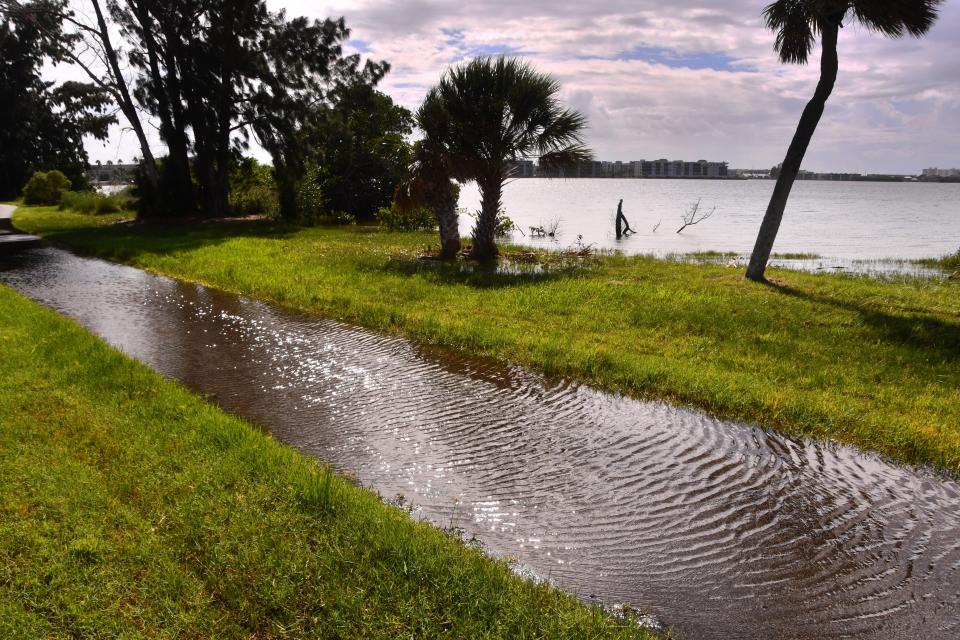
How does all that additional water affect the angling world? Well, consider you came upon a familiar stream or canal that had dried up — to the point of being walkable. You’d probably walk it, wouldn’t you.
Now, let's say you're a fish. Wait ... you do like a little role play, right?
OK, let’s say you’re a fish and you come upon an area usually lacking in enough water for your travels, but now it’s flooded. Don’t you reckon you’d flap that forked tail of yours and give a look-see to all the new bait buffets possibly available?
That’s why your neighbor might’ve caught a redfish or even a tarpon off his backyard dock this past week, when normally his best hope is a mangrove snapper mixed in with a few catfish and maybe a jack.
Maybe you've had enough of the backyard and you're itching to get the boat back in the water. Your day is coming, and when it does, our occasional contributor here — Capt. Billy Pettigrew, who specializes in redfish with his Come’N’GetIt charter boat — offers some professional pointers to fishing a flood.
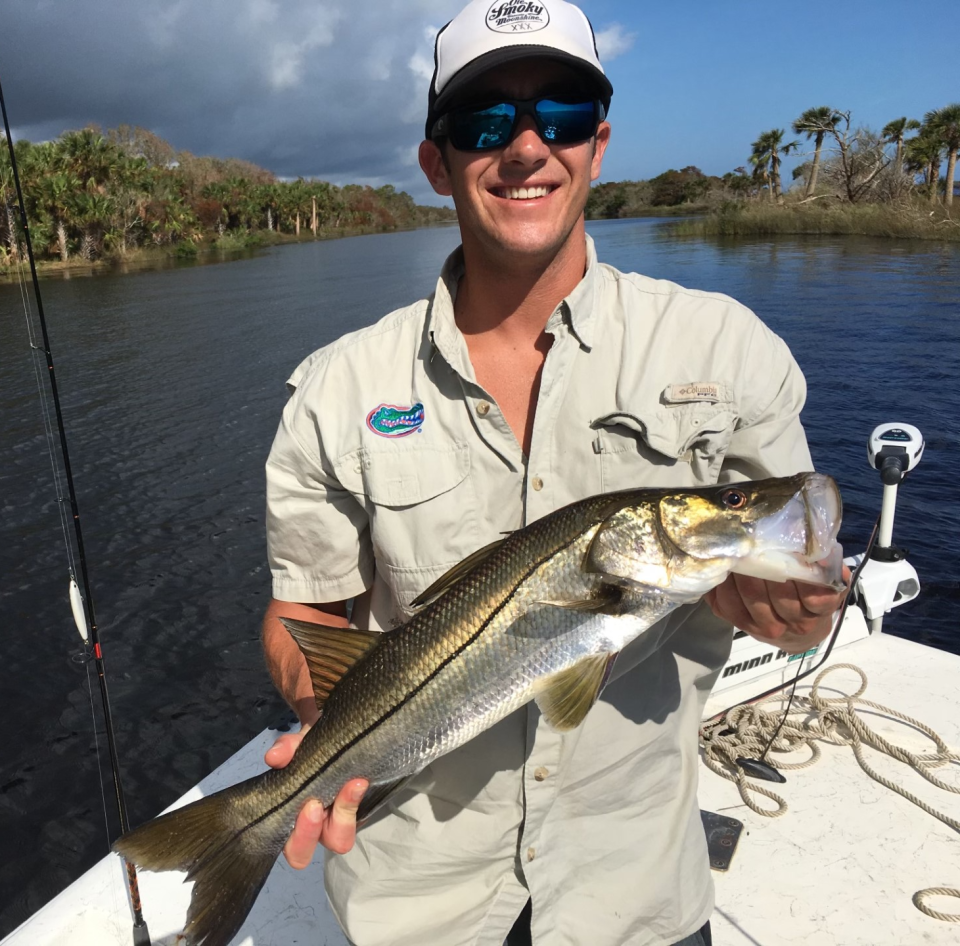
“I'd recommend sticking to the main river and major creeks,” Capt. Billy begins. “Find hard bottom and/or hard bank. Hard bottom consists of rock, oysters, and sandbar points. Hard banks consist of dry shorelines and seawalls.
“Also, don't overlook bridge pilings, fenders, docks, and jetties. If you can find hard bottom and hard banks together, that’ll be your best bet.”
FISHBITES The idea for Fishbites began with young Billy Carr in New Smyrna Beach
That backwater creek or flat where you’ve been known to hook a quality fish? Not so much.
“The fish push deep into the mangrove bushes and grass and become nearly impossible to catch,” Capt. Billy says. “Avoid fishing these areas until the water drops back down.”
When you settle on a proper fishing hole, and assuming you’re a live-bait angler, Capt. Billy recommends live shrimp or finger mullet on either a Carolina or fish-finder rig.
“With 12 to 24 inches of leader for best results,” he says, “and just enough weight to hold the bottom.”
Well, the hives are gone, I lost my bees
Chickens are sleepin' in the willow trees
Cow's in water up past her knees
Three feet high and risin'
Halifax/Indian River
Nighttime is the right time these days. When those daytime winds let off the throttle after the sun sinks (and, of course, before it rises), things are calmer and the fish are again as plentiful as they were a couple of weeks ago before our recent run of challenging conditions.
“We’ve had really good snook fishing around bridges and docks lately, with a lot of people doing well at night. Tarpon have also been around the bridges,” says Capt. Jeff Patterson (Pole Dancer charter).
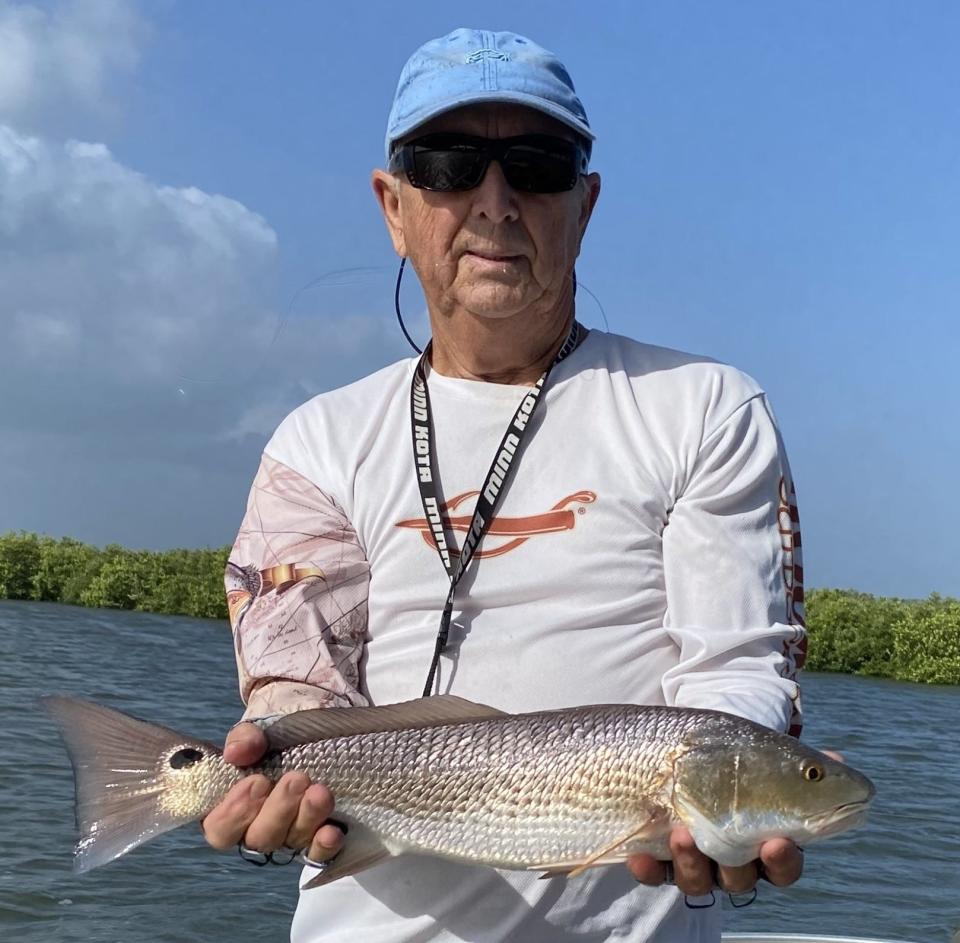
Capt. Jeff offers a reminder: Higher than normal tides means faster currents. Adjust accordingly.
Moving up the intracoastal, it’s still largely about the mangrove snapper, though Ike Leary says the early birds are catching some black drum from the Granada pier behind his Granada Bait shop – again, before the wind cracks its knuckles and greets the day.
On up the way toward the Volusia-Flagler line, Capt. Jamie Thrappas says High Bridge has been “on absolute fire.”
Capt. Jamie, who operates Yellow Dawg Charter and also owns the Yellow Dawg Bait & Tackle at High Bridge, says those who braved last week’s rains did very well, and he expects more of the same in the days ahead.
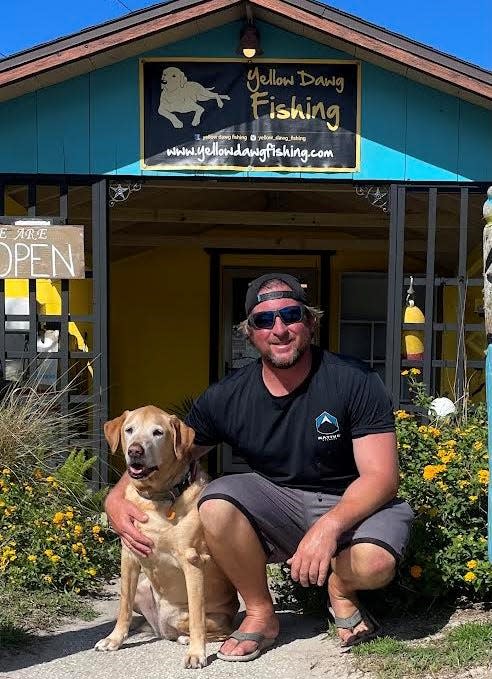
“Snook, tarpon, and redfish are feeding everywhere around the area,” he says. “There have even been a bunch of tripletail being caught off the docks under the bridge.”
If you’re heading that way by car, bike or foot, Capt. Jeff suggests approaching from the A1A side, in case parts of High Bridge Road is still under water.
Surf (and offshore)
Conditions should improve ever so slightly in the coming days as winds nudge from northeast to northwest. Thanks for small favors.
Then the forecast says we’ll get more northeast punches next week until about Thursday, when a few days of breezes from the south arrive.
Meanwhile, for some, the next best thing to fishing is preparing to fish.
“I’ve made 75 pompano rigs,” says Marco Pompano, who says recent surf conditions have produced “a churning urn of burning funk,” which doesn’t sound conducive to shoreline or offshore ventures. “The current is moving so fast and it has turned brown. It’s going to take a little bit of time to clean up.”
Down toward Southeast Volusia (SeVo?), some hardy folks have added bigger sinkers and found some whiting, but the less adventurous types, especially down in the Bethune Beach area, have walked across the street to the west and tried the lagoon side, to mixed results.
“Mostly catfish and mangrove snapper,” says Josh Rosen (Chums bait shop).
Flagler
Much like its southern neighbor, Palm Coast fishing has been most productive in all those various backyard canals, way off the beaten path, where the whipping is dramatically lessened.
The main river has been a challenge and Matanzas Inlet a fool’s errand, but as things calm down, expect a great couple months of fishing, including the annual visit of our first sheepshead herds.
St. Johns
The beautiful St. Johns is one of those rare rivers that flows to the north. A Gator fan will gladly tell you why.
However, on occasion, we get several days of steady blows out of the east and northeast, and the river runs in the opposite direction — a result of all that water being pushed through the St. Johns’ meet-up with the Atlantic on Jacksonville’s northside.
Not only does it run the wrong way, but it does so with gusto.
“It’s pretty high right now,” Kerry McPherson says from his South Moon Fish Camp in Astor. “It’s over our dock. Should start dropping by the end of the week, but it’ll be a slow drop. Won’t happen overnight.”
Ironically, while “things are pretty slow around here,” according to Kerry, the fish are out there for anyone willing to put in the work.
“Bass fishing has been decent,” he says. “Specks still doing good … and bream.”
Hook, line and clicker: Send us your fish pics
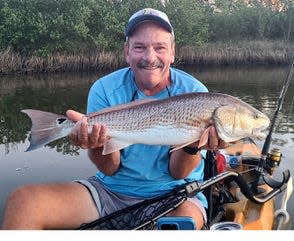
We want to see your most recent catch. Email your fish photos to ken.willis@news-jrnl.com.
Please include first and last name of angler(s), as well as type of fish (we're occasionally stumped). All are included with our online fishing report, and some occasionally make the print edition
Do I need a fishing license?
You can find all the license info, including exemptions, on Florida's Fish and Wildlife Commission website: MyFWC.com. But the basics are: No: If you're 65 or older, 15 or younger, you don't need a license. No: If you're fishing with a licensed guide or charter boat, both of which purchase commercial licenses that cover their customers. Yes: Most everyone else, including visitors from other states. Yes: Even if you're a shore-based angler (shoreline, dock, pier, bridge, etc.). However: The shore-based license is free . . . But: You still need to register for that free license.
Where do I get a license and what does it cost?
Many bait shops sell licenses, as do the bigger retailers (Bass, Dick's, Walmart, etc.). Florida's FWC uses a third-party site for buying or renewing fishing licenses: GoOutdoorsFlorida.com. The cost: $17 for an annual license. Don't forget: Whether you're fishing fresh or saltwater, you need the specific license. Freshwater and saltwater licenses are both $17 annually.
I’m here on vacation, do I need a license?
Yes you do, and they're also available at GoOutdoorsFlorida.com or certain bait shops and big retailers. Cost: $17 for three days, $30 for seven days, $47 for a year.Also: Non-residents need to purchase that license even if they're just fishing from shoreline or shore-based structures. (Florida residents need that license, too, but they're free.)
This article originally appeared on The Daytona Beach News-Journal: How high's the water, mama? A fishing roundup Johnny Cash would love

